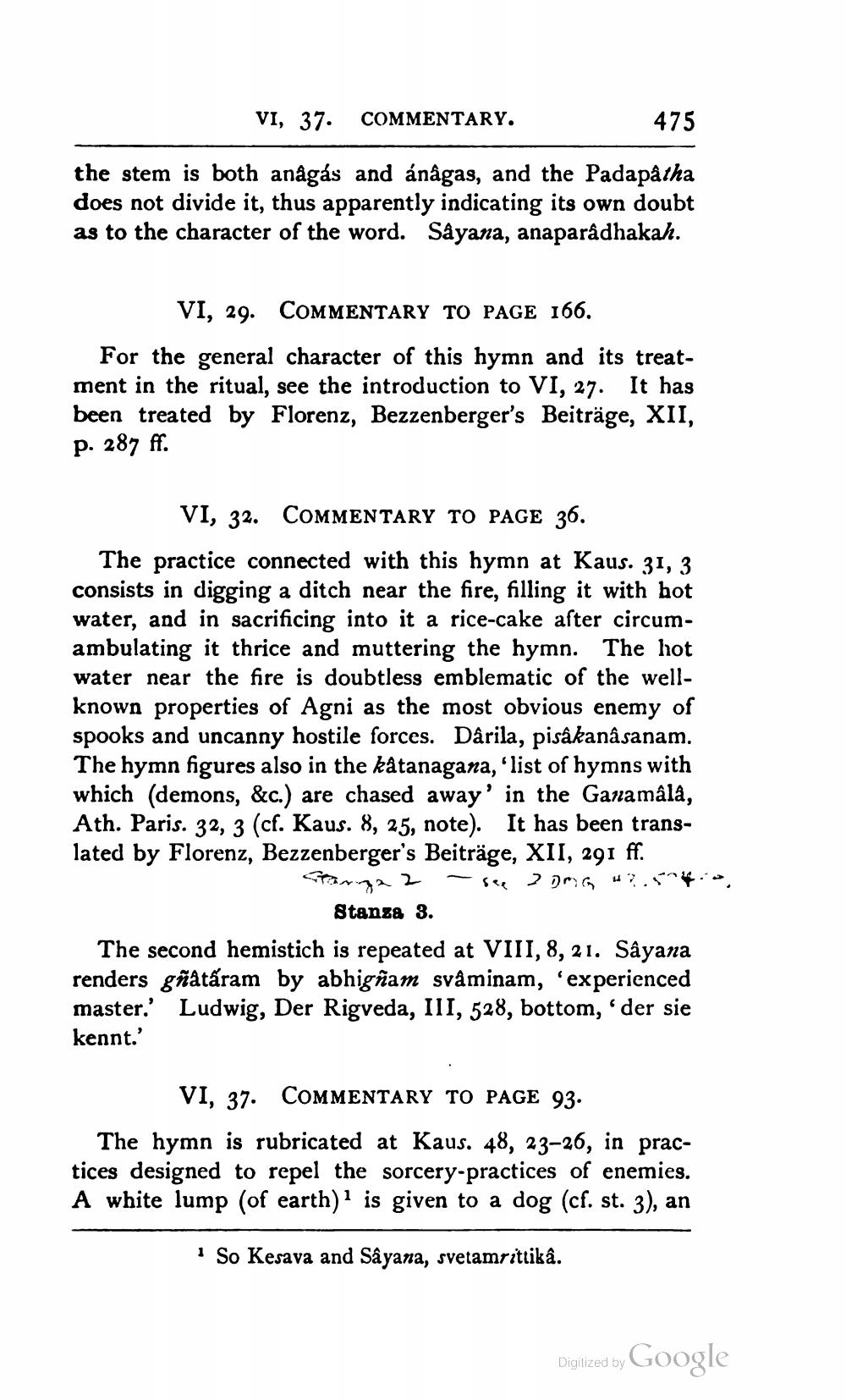________________
VI, 37.
the stem is both anâgás and ánâgas, and the Padapâtha does not divide it, thus apparently indicating its own doubt as to the character of the word. Sâyana, anaparâdhakah.
COMMENTARY.
475
VI, 29. COMMENTARY TO PAGE 166.
For the general character of this hymn and its treatment in the ritual, see the introduction to VI, 27. It has been treated by Florenz, Bezzenberger's Beiträge, XII, p. 287 ff.
VI, 32. COMMENTARY TO PAGE 36.
The practice connected with this hymn at Kaus. 31, 3 consists in digging a ditch near the fire, filling it with hot water, and in sacrificing into it a rice-cake after circumambulating it thrice and muttering the hymn. The hot water near the fire is doubtless emblematic of the wellknown properties of Agni as the most obvious enemy of spooks and uncanny hostile forces. Dârila, pisâkanâsanam. The hymn figures also in the kâtanagana, 'list of hymns with which (demons, &c.) are chased away' in the Ganamâlâ, Ath. Paris. 32, 3 (cf. Kaus. 8, 25, note). It has been translated by Florenz, Bezzenberger's Beiträge, XII, 291 ff. Stanga 2 See 2 DMG 47
Stanza 3.
The second hemistich is repeated at VIII, 8, 21. Sâyana renders gñâtáram by abhigñam svâminam, 'experienced master.' Ludwig, Der Rigveda, III, 528, bottom, ' der sie kennt.'
VI, 37. COMMENTARY TO PAGE 93.
The hymn is rubricated at Kaus. 48, 23-26, in practices designed to repel the sorcery-practices of enemies. A white lump (of earth)1 is given to a dog (cf. st. 3), an
1 So Kesava and Sâyana, svetamrittikâ.
Digitized by
Google




